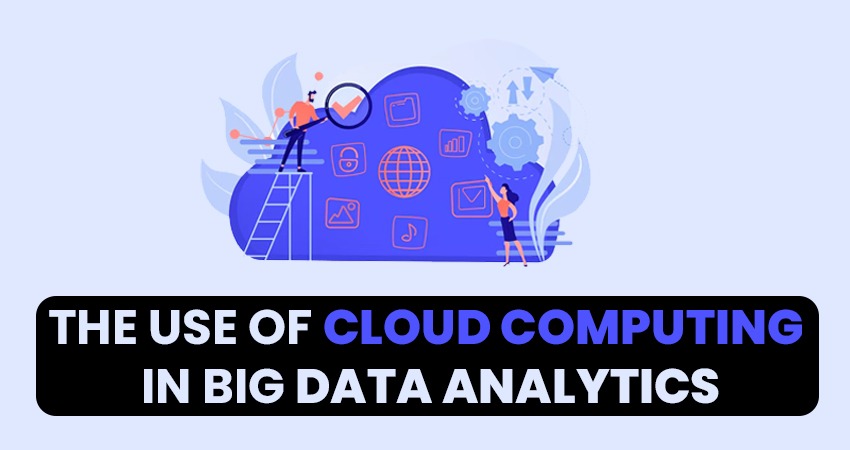The use of cloud computing in big data analytics from Engineers Heaven's Idea / Prospect

We live in the world of big data. Businesses, governments, and researchers use it to identify patterns, inform decisions, and optimize processes. But working with big data is no easy task. Both traditional storage and processing methods fail when the data becomes too large. This is where cloud computing in big data analytics comes in very handy.
Big data analytics has immensely improved with the help of cloud computing. It offers flexible, scalable, and cost-effective solutions. Enterprises no longer have to spend on costly hardware. Instead, they can process data quickly and efficiently using cloud platforms.
We discuss new technologies that are helping to change the way of life at Engineers Heaven. This blog will explore how cloud computing improves big data analytics and makes it the best choice for modern data-driven industries.
What is the Role of Cloud Computing in Big Data
It demands enormous storage and computing power. Cloud computing offers both. It enables companies to store and work with vast amounts of data without physical infrastructure. Rather than purchasing servers, companies can rent servers from cloud providers.
Cloud platforms provide resources on demand. Companies can expand or contract as required. Cloud computing is an ideal solution for big data analytics because of its flexibility.
benefits of cloud computing in big data
- Scalability and Flexibility
Big data workloads fluctuate. For some companies, they may require tremendous computing power on certain days. On other days, it may need less. And so does cloud computing. Organizations can also scale resources up or down in real-time. This saves waste and costs money.
- Cost-Effective Solutions
The cost of setting up a traditional data center is high. It needs hardware, upkeep , and IT personnel. These costs are eradicated with cloud computing. Businesses receive a utility price only for what they consume. This pay-per-use model certainly lowers the costs of big data analytics.
- High-Speed Processing
Powerful computing is required because data analytics is needed. Cloud platforms use distributed computing systems. This means information is processed and streamed concurrently between multiple servers across the group. The result? Faster insights & faster decision-making.
- Complex Interactions with AI and Machine Learning
AI and ML models are often found in big data. These technologies thrive in the perfect environment provided by cloud computing. That means cloud providers offer built-in AI tools that help businesses analyze their data more effectively. It leads to more accurate data-driven predictions.
- Accessibility and Collaboration (Remote)
Data teams typically operate in remote environments. Cloud computing allows access from anywhere. Workers can derive insights from data anywhere around the globe. This improves collaboration and productivity.
- The Role of Cloud Computing in Revolutionizing Industries
Big data is crucial to so many industries. It is easy to process and analyze information on cloud computing. Here are some
examples of how this works in the real world:
- Healthcare
Hospitals produce enormous amounts of patient information. Physicians also use cloud analytics to predict diseases, optimize treatment, and manage hospital resources more effectively.
- E-Commerce
Big data helps online retailers track customer behavior. Cloud platform helps them personalize recommendations, optimize pricing, and prevent fraud.
- Finance
Banks and financial institutions conduct a real-time analysis of transactions. Cloud computing enables them to identify fraud, calculate risks, and make data-driven investment decisions.
- Manufacturing
Manufacturing plants have turned to cloud hosts for big data analytics on predictive maintenance. Sensors track machinery, and cloud AI forecasts failures before they occur. This decreases downtime and cuts costs.
- Smart Cities
Governments use cloud computing to study traffic, energy consumption, and public safety. This aids in more intelligent, more efficient city functionality.
Top Cloud Platforms for Big Data Analytics
Many cloud providers have specific tools for big data analytics. With this in mind, here are some of the most popular platforms:
- Amazon Web Services (AWS) – This includes platforms like Amazon Redshift, AWS Glue, and EMR for data processing on a massive scale.
- Microsoft Azure – Includes Azure Synapse Analytics, Databricks, and Microsoft AI-driven data solutions.
- GCP — Google Cloud Platform — Offers BigQuery, Dataflow and AI-driven analytics
- IBM Cloud – Offers Watson AI and data analytics capabilities.
The company offers platforms enabling enterprises to address intricate data problems effectively.
The Role of Cloud Computing in the Future of Big Data
Cloud computing will forever evolve. Big data analytics will benefit from the convergence of edge computing, AI, and quantum computing. More companies will adopt a mix of public and private cloud infrastructure through hybrid cloud models.
At Engineer’s Heaven, we understand the importance of being ahead of the technology curve. Cloud-based big data analytics are no longer optional but the need of the hour. Companies that adopt these technologies are the future.
(Disclaimer: This statistics could be different in different part of World and Different timeline. this statistics has been generated based on data available till 2025 or relavant time span.)

The Wall